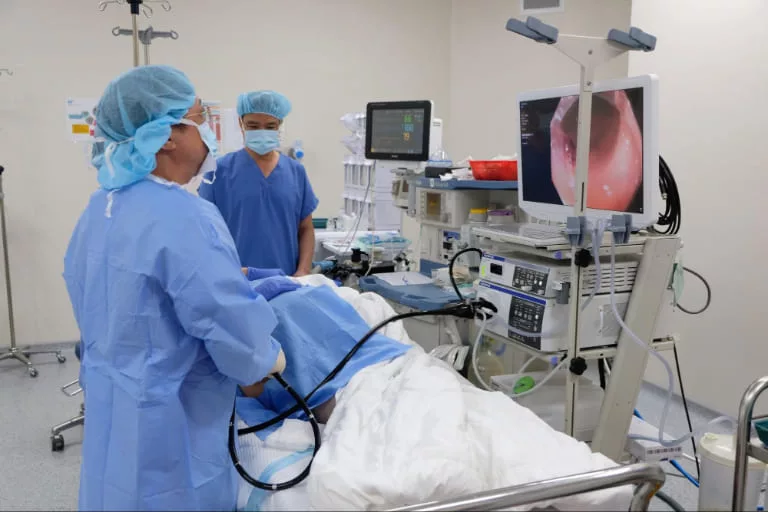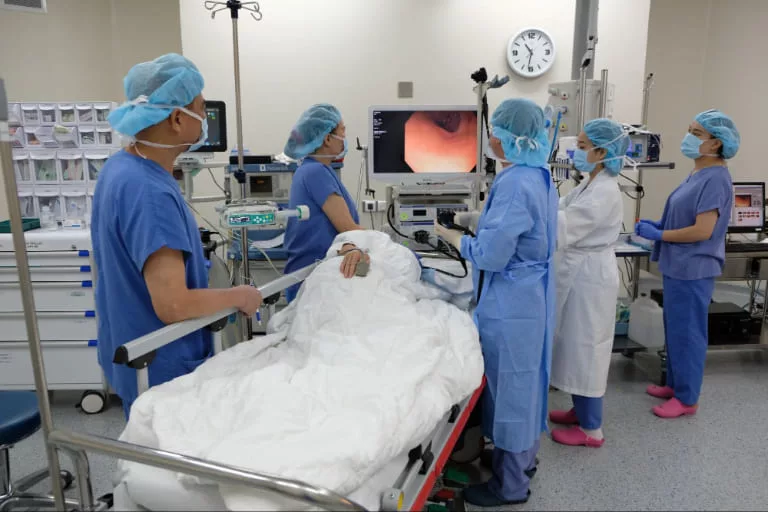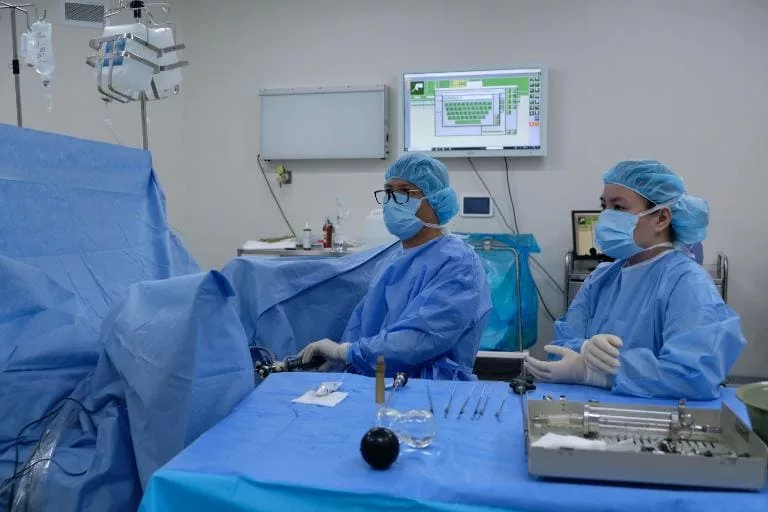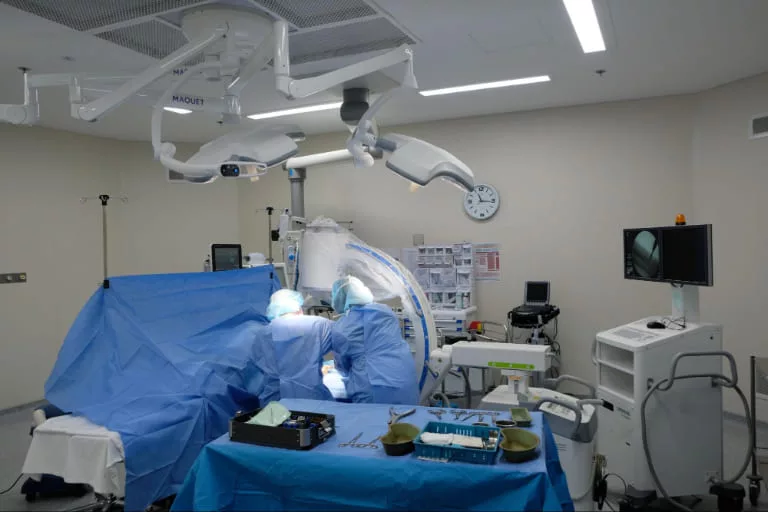Commonly applied endoscope function today
Endoscopy is a commonly used method in diagnostic, therapeutic and surgical medicine.
Diagnostic endoscopy
During an endoscopy, a thin, flexible tube with a camera is inserted into the body. This allows doctors to directly view internal organs like the stomach, intestines, and lungs for abnormalities such as ulcers, polyps, and tumors. Endoscopy is often used after patients have experienced concerning symptoms to diagnose the cause.
The expected procedure time is 5 – 15 minutes. After receiving the results from the endoscopy, your doctor will look forward to your results and devise a reasonable treatment method.

Biopsic endoscopy
Endoscopic biopsy sampling is more invasive than diagnostic endoscopy. Similar to the diagnostic endoscopy process, endoscopy for biopsy samples also uses a small, soft tube with a camera attached to observe inside the body. When abnormalities are detected, the doctor will use specialized tools to take tissue samples for testing.
This function of endoscopy is used to examine more closely for diseases that cannot be concluded by imaging such as tumors and inflammation.
Therapeutic endoscopy
Endoscopy is not only a diagnostic tool but is also widely used in various treatments. Laparoscopic surgery is considered a safe method because it is less invasive, has a quick recovery, and does not leave scarring. Some diseases require endoscopic treatment such as endoscopic discectomy and endoscopic sinus surgery.
Like other endoscopic functions, therapeutic endoscopy is performed through in different ways such as endonasal endoscopic surgery and oral endoscopic surgery. Depending on the pathology, your doctor will choose the appropriate option.

Because the surgery involves many steps, it will take more time. Surgery can take 30 minutes, depending on its complexity. Patients require more recovery time after therapeutic endoscopy.
Health issues that endoscopy can treat
Endoscopy is a method of treating diseases inside the body including the following organ systems: respiratory, digestive, and urinary. The following are health conditions that endoscopy can treat.
ENT diseases
Otorhinolaryngology diseases are a common group of diseases and can affect people of all ages. Common diseases include sinusitis, tonsillitis and otitis media. For these diseases, patients need to undergo endoscopy to check for internal abnormalities. Ear endoscopy is also a typical method to help identify injuries in the ear that lead to common otitis media in young children. In addition, if you see symptoms such as ringing in the ears, not hearing clearly or ear pain. You can also require an endoscopy to check for foreign objects in the ear.
A disease that also belongs to the ENT specialist is sinusitis. Common symptoms are: a stuffy nose, runny nose, headache or cough. For cases of acute sinusitis, patients are advised to use medication. However, in cases of chronic sinusitis, patients must undergo endoscopic sinus surgery.
Digestive diseases
Gastric endoscopy is the most commonly used service in the digestive endoscopy specialty. Common diseases are stomach ulcers and stomach polyps. Furthermore, endoscopy is also used as a method to enable gastric tumor removal surgeries.
Anal endoscopy is a method that helps examine diseases related to the colon and rectum. Before performing the endoscopy, patients need to prepare to clean the intestines and colon. The anal endoscopy process lasts from 15 to 30 minutes.

Musculoskeletal disease
Endoscopy is also a way to treat bone diseases, the most common being endoscopic discectomy. This is a modern and minimally invasive method, used to treat problems related to spinal discs such as disc herniation. If not treated promptly, the patient may have nerve compression, causing pain.
In addition, endoscopy is also applied in endoscopic spine surgery. This method is often indicated for spinal spurs and spondylosis. By making a small incision of about 0.5cm on the spine to insert the instrument to remove the herniated nucleus, helping to minimize damage to surrounding muscles and tissues.

Understanding the functions of endoscopy and the steps involved will help you prepare better and reduce anxiety if you need to perform this procedure.
